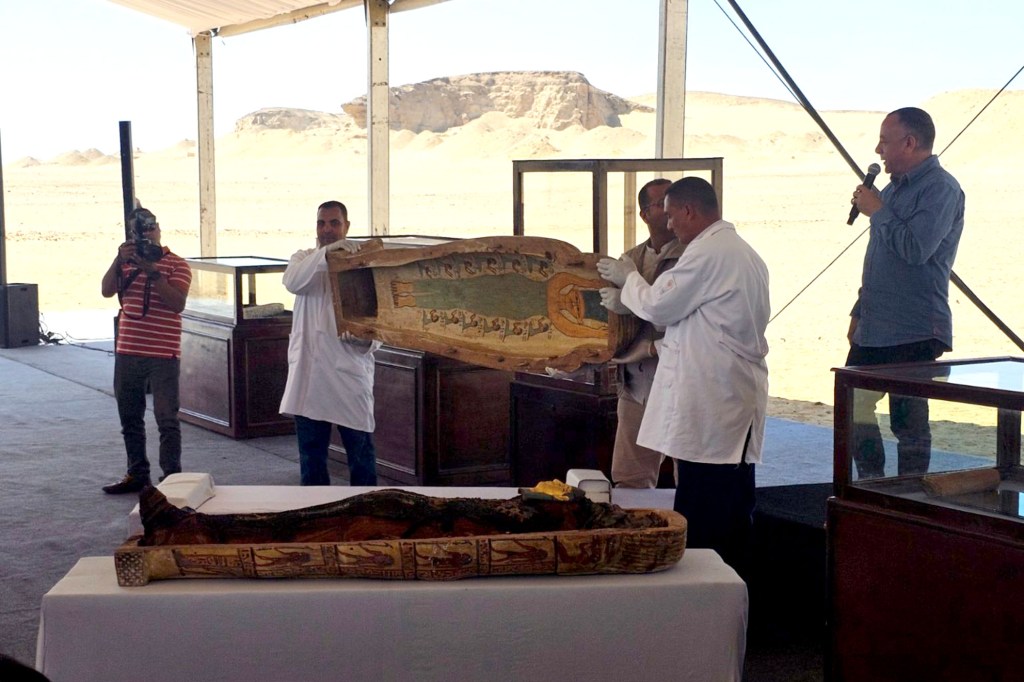Mummy’s unearthed coffin features ‘unreal’ depiction of beloved ‘Simpsons’ character
D’oh!
The markings on a recently unearthed coffin are being compared to Marge Simpson from Fox’s long-running cartoon “The Simpsons.”
The mummy’s resting place was discovered late last year in a 3,500-year-old cemetery in Minya, Egypt, and is believed to belong to senior officials and priests of the New Kingdom from 1550 BC to 1069 BC.
Coffins of the time have been found to feature detailed carvings and paintings of the deceased, deities and scenes from the “Book of the Dead,” spells used to assist the dead in the afterlife, according to thearcheologist.org.

The upper lid of one of the coffins recently unearthed in Middle Egypt shows a yellow-colored woman, dressed in green clothing and a blue crown, which some have compared to the show’s big-haired matriarch.
“Marge?” a person commented on Reddit, where another viewer labeled it “unreal.”
“Matt Groening really is a time traveler,” someone said, referencing the cartoon’s creator.
“Egypt predicted Simpsons,” another wrote.
“The only documented time in history where The Simpsons didn’t do it first,” someone also commented.

The long-running show is often credited for making predictions about the future, such as technology similar to the Apple Vision Pro and the explosion of the Titanic submersible.
The coffin in question is said to belong to Tadi Ist, daughter of the High Priest of Djehouti in Ashmunein.
“It is a rare and important scene ever. Every scene of the hour has its shape,” the chief of the Supreme Council of Antiquities said of the discovery, according to The Egyptian Gazette.
The discovery provides more information on the burial practices, artistry and culture of ancient Egypt during the New Kingdom period, often called the “Golden Age.”
The burial ground comes after an international team of researchers believed they found evidence of ancient Egyptians performing experimental treatments or medical explorations of human cancer more than 4,000 years ago.
A skull with a tumor was observed with about 30 small round lesions. The researchers were stunned to discover that someone had cut around the lesions, seemingly with a sharp object.
Researchers warned against coming to conclusions but are optimistic about what this discovery could mean for the global history of cancer.







